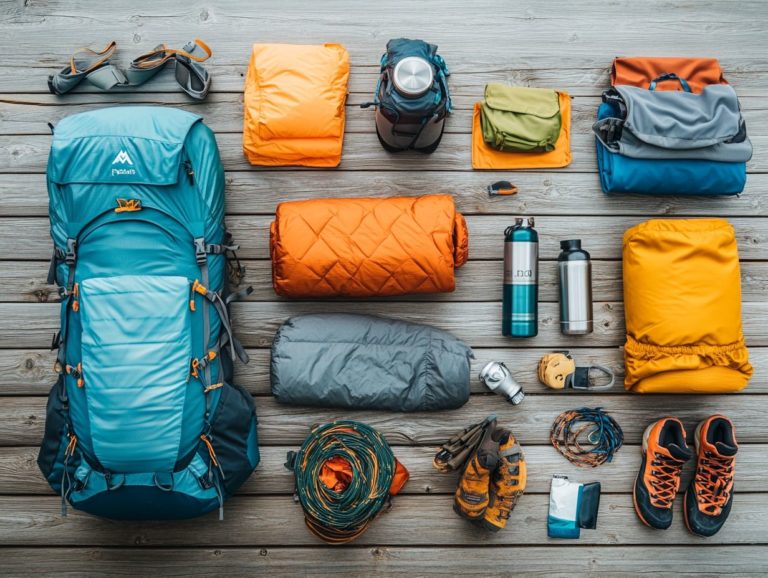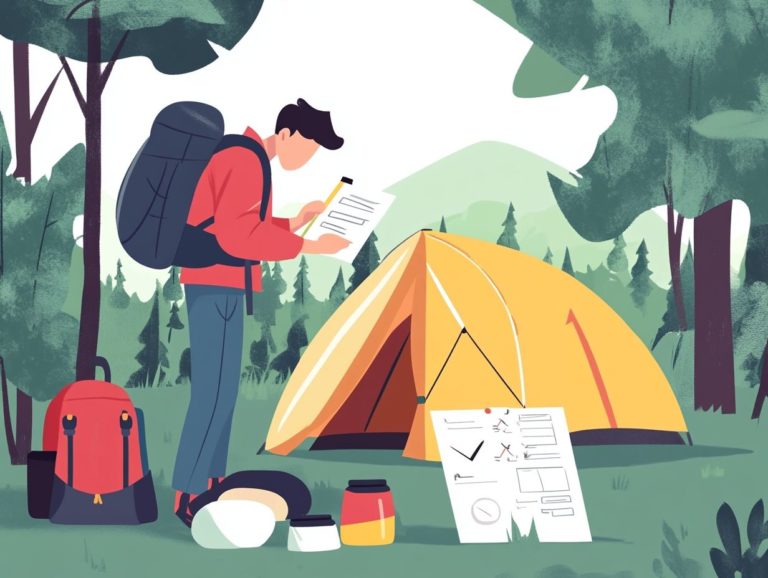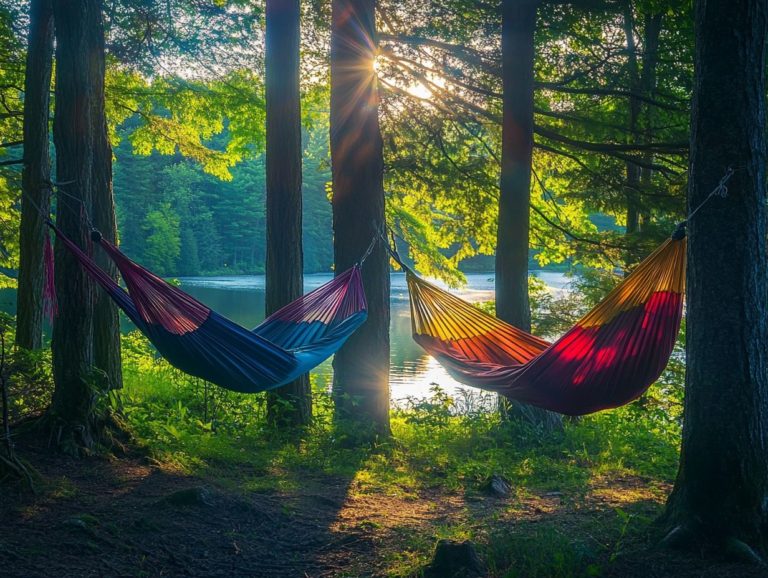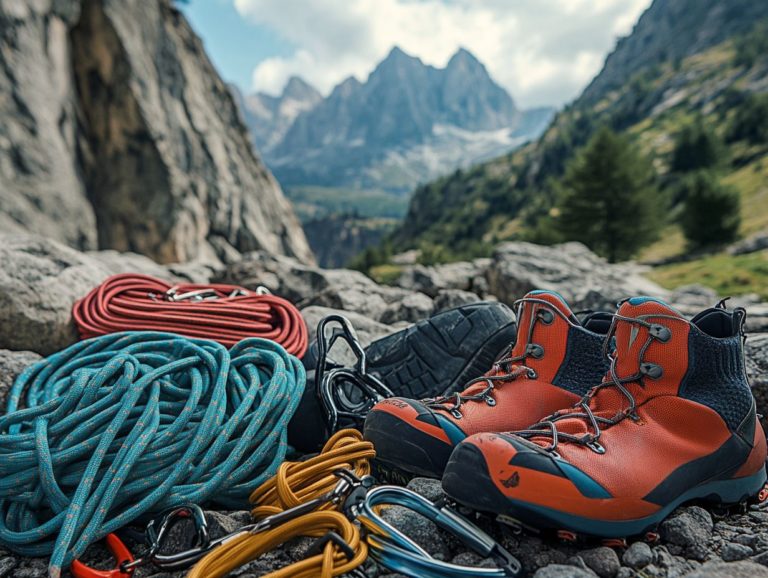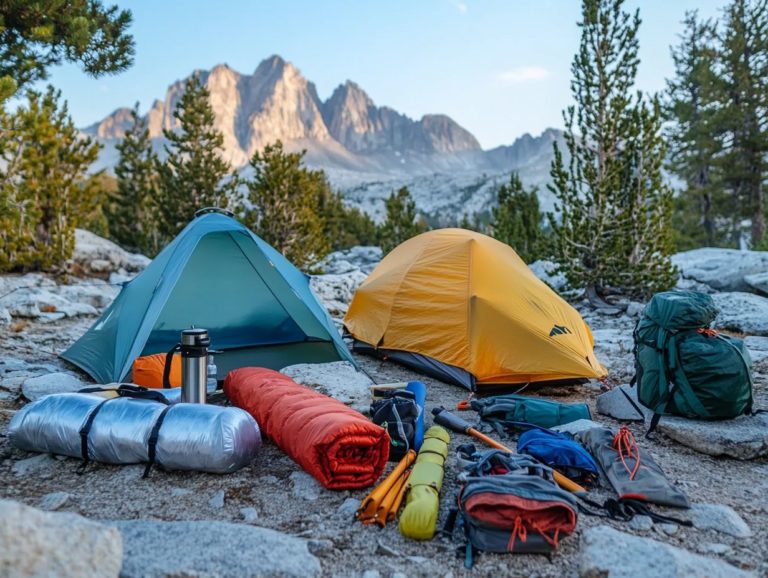Choosing the Right Campsite: Tips and Tricks
Embarking on an outdoor adventure begins with choosing the perfect campsite. There s a lot to take into account!
From the ideal location and necessary amenities to easy access to water and other resources, each factor significantly impacts your overall camping experience.
This guide will delve into essential aspects of campsite selection, preparation, and setup, ensuring your adventure is memorable. Get ready to explore breathtaking views and hidden gems!
Contents
Key Takeaways:
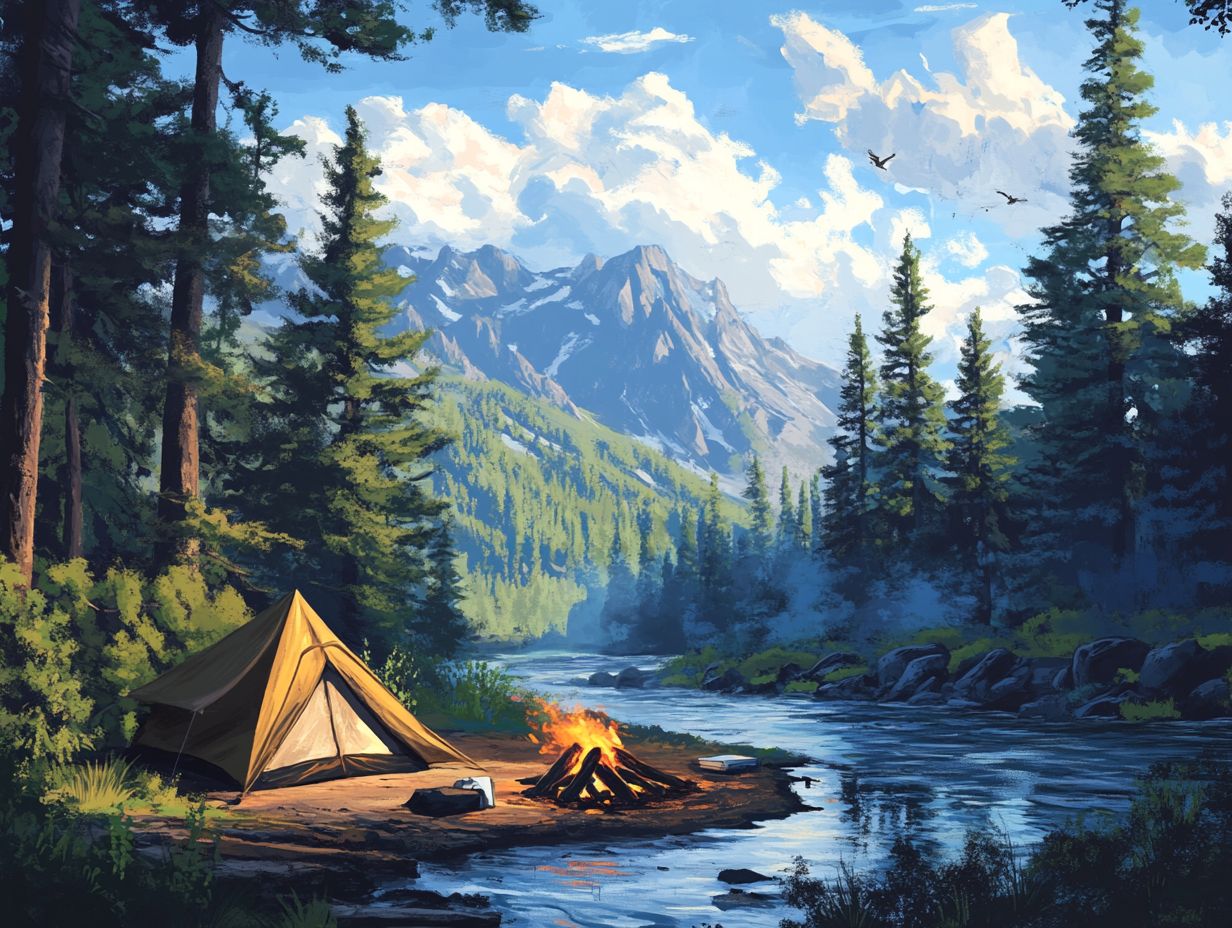
- Choose a campsite with a convenient location, amenities, and easy access to resources like water.
- Prepare by researching and packing your essentials it’s key to a successful adventure!
- When setting up camp, prioritize safety and choose your spot carefully. Seek expert advice for choosing the perfect campsite.
Factors to Consider when Choosing a Campsite
Selecting the ideal campsite is paramount for crafting an unforgettable experience. Various factors will profoundly impact your time in the great outdoors.
Ensure you have a level area for your tent and assess the easy access to water. Every detail is essential for your comfort and safety.
Consider factors like the likelihood of frequent rain and wind direction to optimize your setup. This will provide the campsite privacy you desire while reducing sun exposure.
Spotting dead trees and following Leave No Trace principles, which means keeping nature clean and undisturbed, can elevate your camping adventure.
Location and Accessibility
The location of your campsite is crucial as it influences your access to trails and scenic views, enhancing your overall experience.
Assess the distance from established hiking trails to ensure ease of access. This allows you to immerse yourself in nature’s wonders.
A thoughtfully chosen spot can provide breathtaking vistas and convenient routes for day hikes.
Keep in mind the proximity to both popular and lesser-known paths. These can lead you to hidden gems waiting to be discovered!
Utilizing topographic maps and navigation apps can enhance your planning. This helps you capture stunning landscapes without straying too far from your base.
Evaluate trail conditions and elevation changes to gauge difficulty levels. This way, you can enjoy excursions tailored to all skill levels and ensure a memorable and fulfilling outdoor adventure.
Availability of Amenities
Understanding the availability of amenities at your chosen campsite is essential for a comfortable and enjoyable camping experience.
Consider key amenities that can enhance your stay in nature. For instance, easy access to firewood is often a must-have. It provides warmth and serves as a perfect centerpiece for cooking and gathering.
Nearby drinking water sources are crucial for hydration and meal preparation, sparing you the hassle of lugging heavy supplies. Cooking facilities, such as designated grills or picnic tables, simplify meal prep.
Equipping yourself with the right camping gear, like a Camp Cooking Starter Kit, elevates the overall convenience and enjoyment of your trip. This ensures every meal feels like a culinary adventure rather than a chore.
Start planning your adventure today and make memories that last a lifetime!
Proximity to Water and Other Resources
Proximity to a reliable water source is paramount when selecting your campsite; it significantly influences your hydration and the practicality of various camping activities.
Having easy access to water covers the basics like drinking, cooking, and cleaning. It also elevates your entire camping experience. Imagine effortlessly washing dishes, cleaning your gear, or refreshing yourself after a long day on the trails.
Keep in mind that prime locations can also attract mosquitoes and a host of wildlife eager to take advantage of the water supply. To keep these unwelcome guests at bay, consider employing a few strategies:
- Use insect repellent
- Set up nets
- Maintain distance from stagnant areas and ensure proper weather protection to minimize mosquito presence
By ensuring that your cooking and waste disposal areas are adequately protected from animals, you ll create a more enjoyable and safe outdoor environment while still enjoying that essential water source.
Preparing for Your Campsite Selection
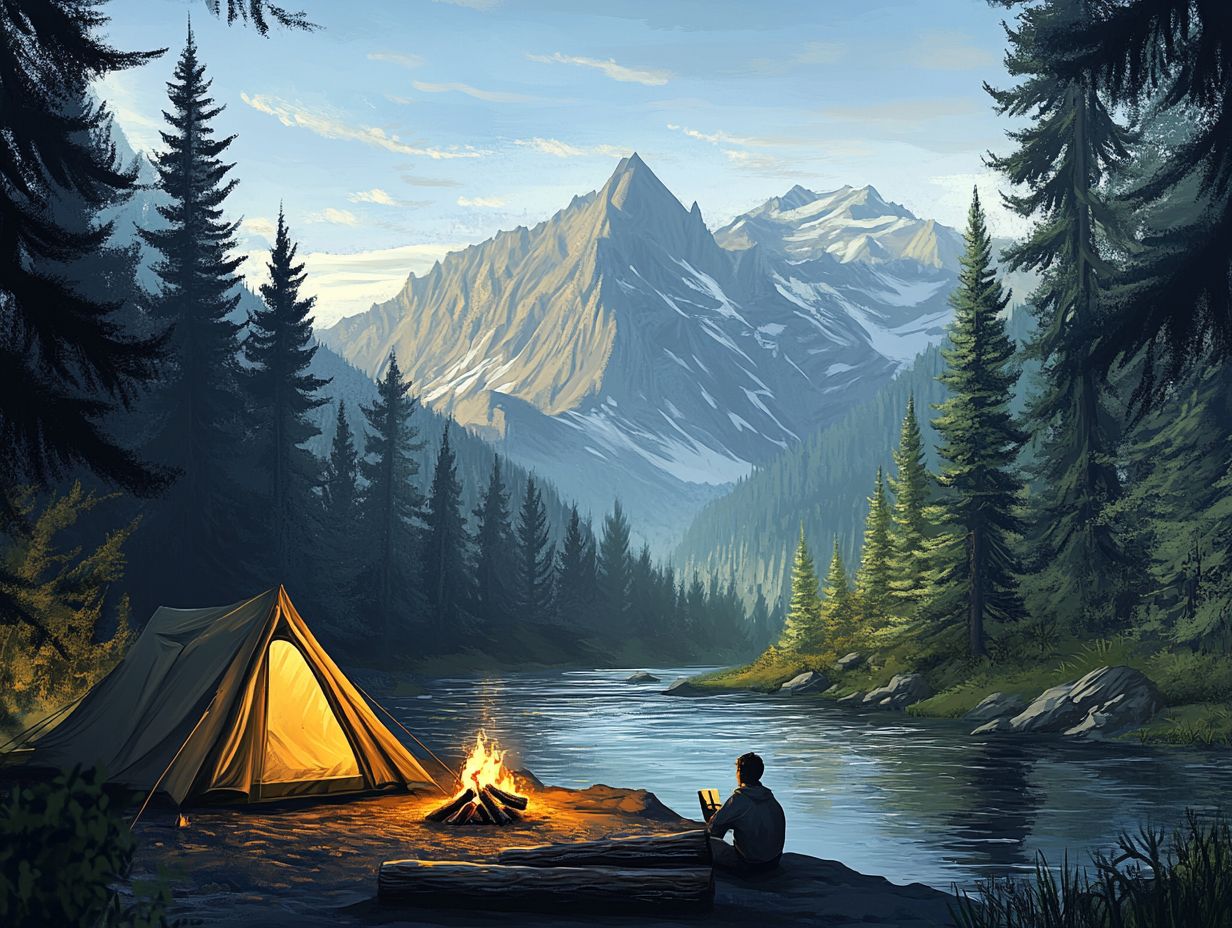
Get ready to secure your dream campsite preparation is everything! Start with comprehensive research and meticulous planning before your camping adventure.
By dedicating time to understand your options, you enhance your chances of finding a location that meets all your needs and preferences.
Researching and Planning Ahead
Researching various campsites, whether along the Pacific Crest Trail or nestled in New Hampshire’s White Mountains National Forest, is essential for crafting a truly enriching camping experience.
Dive into user-generated reviews on platforms like Campendium or AllTrails to uncover insights about each site’s amenities, accessibility, and local wildlife. Engaging in forums and social media groups dedicated to camping opens the door to conversations with fellow adventurers who have firsthand experience.
This collective knowledge enables you to align your camping adventure with your personal preferences whether you’re yearning for solitude in nature or seeking family-friendly locations. Leveraging resources like the official National Park Service website further enhances your understanding of regulations and tips specific to each area, ultimately elevating your overall camping journey.
Packing the Necessary Gear
Packing the essential camping gear is crucial for ensuring your outdoor adventure is a success. Whether you opt for a canvas tent, a hunting tent, or a lightweight camping tent designed for convenience, choosing the right option can greatly affect your comfort and convenience.
Each type of tent has its unique advantages and disadvantages. A canvas tent is robust and offers excellent insulation, but its weight can make it less suitable for backpacking trips. On the flip side, a hunting tent may come with camouflage patterns and extra features, yet it might not provide the spaciousness you desire.
Lightweight camping tents are portable and easy to move, but you might find yourself sacrificing space and weather resistance. To enhance your camping experience, focus on packing efficiently by prioritizing lightweight gear like compact sleeping bags and minimalist cooking equipment. Additionally, learning how to set up a campsite effectively can further improve your mobility and make for more enjoyable hikes.
Don t forget to check the weather forecast to ensure your gear matches the conditions, especially considering factors like wind direction and frequent rain. This will help guarantee safety throughout your trip.
Setting Up Your Campsite
Establishing your campsite with precision is essential for guaranteeing a safe and enjoyable experience. Consider key elements such as the ground condition and the rules for interacting respectfully with nature and fellow campers to enhance your adventure in the great outdoors.
Choosing the Best Spot
When selecting the ideal spot for your campsite, evaluate key factors such as flat ground (even ground where your tent won t tilt), the orientation of your entry, and the potential presence of dead trees. Paying attention to these details will boost your comfort and keep you safe essential for an incredible adventure!
A well-leveled surface dramatically enhances your camping experience. It prevents discomfort while you sleep and minimizes the risk of rolling or shifting during the night. The orientation of your tent entrance is equally vital; an easily accessible entrance can transform your mornings, especially when you need to pack up quickly.
Be cautious of nearby dead trees, as falling branches can pose serious dangers during windy conditions or storms. Look for a spot with the right amount of sun exposure; this can significantly affect your comfort levels. The right sunlight can provide warmth on brisk mornings while offering shade during the day’s peak heat.
Setting Up Camp and Safety Considerations
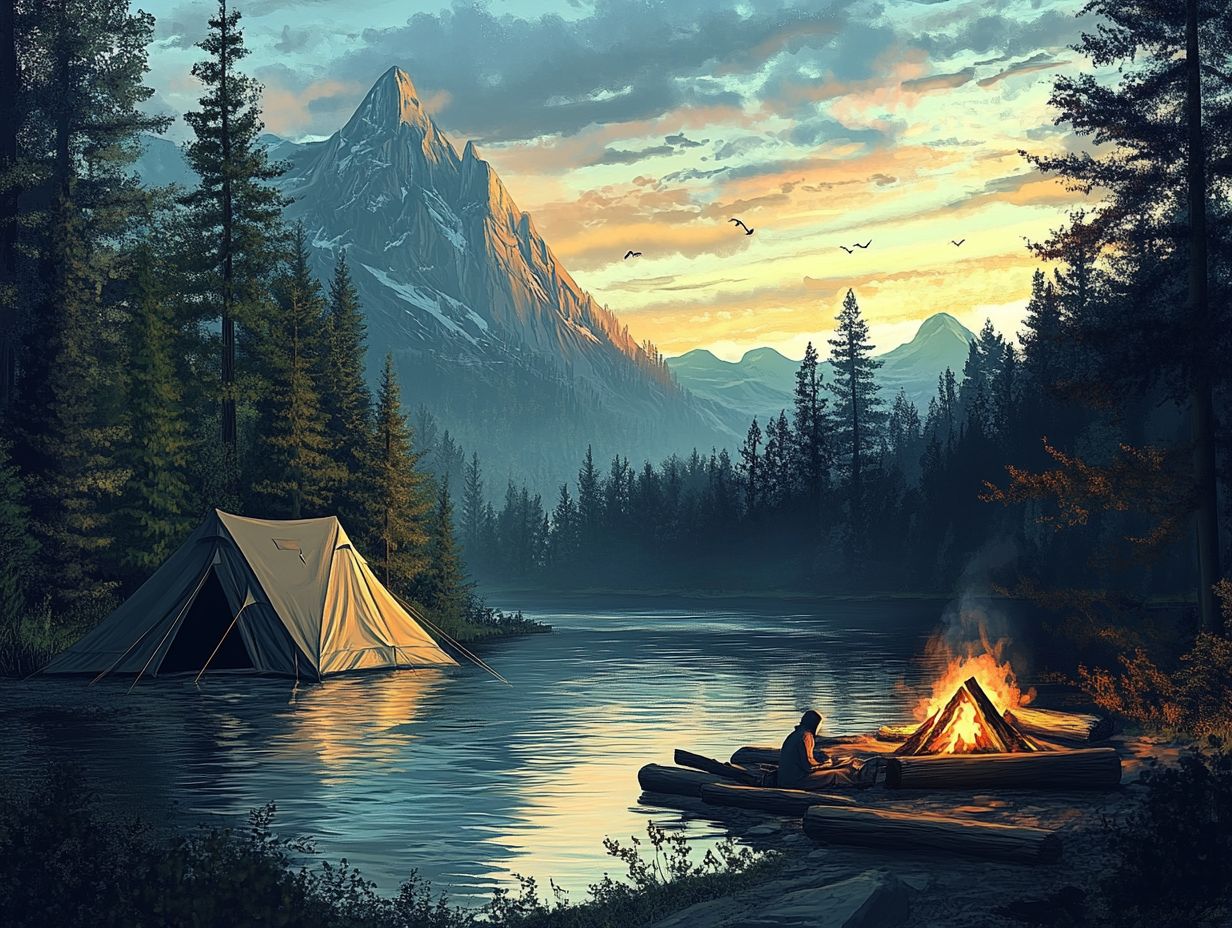
Setting up your campsite effectively means taking safety measures into account, especially regarding weather protection and the direction of prevailing winds. This way, you can ensure a secure and enjoyable stay.
When planning your campsite, assess the surrounding environment for potential hazards, like falling branches or the risk of flooding. Opt for a location with natural windbreaks, such as bushes or rock formations, to enhance your shelter while keeping the wind at bay. For those new to camping, it’s also wise to refer to how to navigate camping tips for beginners and pitch your tent on elevated ground to avoid pesky water accumulation during rains.
Secure your gear and minimize clutter to sidestep accidents that sudden weather shifts might cause. By prioritizing these safety considerations, you can fully immerse yourself in the great outdoors and relish your experience with complete peace of mind.
Tips for Choosing the Right Campsite
Selecting the perfect campsite can elevate your outdoor adventure to new heights. Incorporate expert advice and insider tips to transform your experience from ordinary to extraordinary.
Expert Advice and Insider Tips
To truly elevate your camping experience, focus on selecting a scenic campsite while embracing Leave No Trace guidelines, which help protect nature. This approach deepens your connection with the surroundings and ensures that breathtaking landscapes remain untouched for future generations.
As you plan your trip, prioritize locations that offer stunning views like a serene lake, a majestic mountain backdrop, or a lush forested valley. The right spot can significantly influence your mood and overall enjoyment.
Being mindful of your environmental responsibilities, such as proper waste disposal and respecting wildlife, enhances your commitment to sustainability. By considering these factors, you can create unforgettable memories while preserving the natural beauty you cherish.
Frequently Asked Questions
What factors should I consider when choosing a campsite?
- Terrain
- Accessibility
- Proximity to water and amenities
- Levelness of the ground
Take into account your camping style and preferences, as well as the weather and season. Reviewing entry orientation can also be beneficial.
How do I find a campsite that suits my needs?
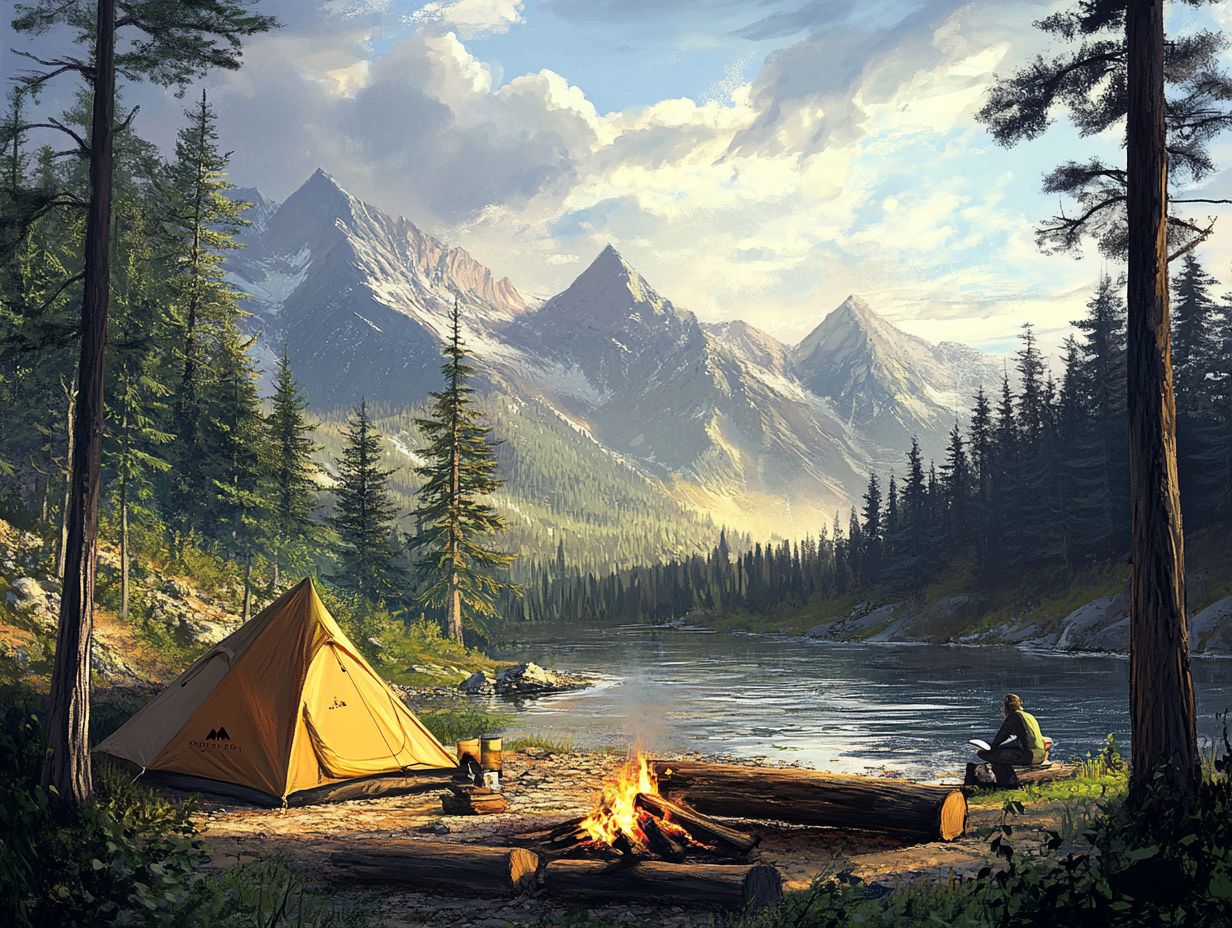
Research and read reviews about various campsites. Look for features and activities that interest you, and check out the provided photos and maps.
You can also ask fellow campers or park rangers for recommendations.
What are some things to avoid when choosing a campsite?
Avoid camping near busy roads, water sources, and steep cliffs. Stay clear of low-lying areas that may flood during heavy rains.
Be cautious of potential hazards like dead trees or ant hills.
How can I ensure my campsite is safe?
Read and follow park rules and regulations. Keep your campsite tidy to avoid attracting wildlife.
Be aware of hazards and take precautions, such as staying a safe distance from your campfire and securing your food from animals. Use tools like Gaia GPS, a navigation app, for effective navigation.
Do I need to make a reservation for a campsite?
It depends on the campsite and the season. Popular sites may require reservations, particularly during peak times.
Making a reservation in advance is a smart move to ensure your spot. There are also first-come, first-served campsites available.
What should I pack for a camping trip?
Bring camping essentials like a tent, sleeping bag, and cooking supplies. Don t forget appropriate clothing and gear for the weather and activities.
Pack insect repellent, a first aid kit, and any necessary permits or passes for your campsite.

